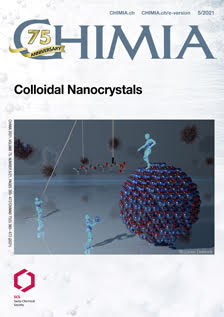Nanocrystal Quantum Dot Devices: How the Lead Sulfide (PbS) System Teaches Us the Importance of Surfaces
DOI:
https://doi.org/10.2533/chimia.2021.398PMID:
34016234Keywords:
Lead sulfide colloidal nanocrystals, Nanocrystal quantum dot devices, Semiconductor nanocrystalsAbstract
Semiconducting thin films made from nanocrystals hold potential as composite hybrid materials with new functionalities. With nanocrystal syntheses, composition can be controlled at the sub-nanometer level, and, by tuning size, shape, and surface termination of the nanocrystals as well as their packing, it is possible to select the electronic, phononic, and photonic properties of the resulting thin films. While the ability to tune the properties of a semiconductor from the atomistic- to macro-scale using solution-based techniques presents unique opportunities, it also introduces challenges for process control and reproducibility. In this review, we use the example of well-studied lead sulfide (PbS) nanocrystals and describe the key advances in nanocrystal synthesis and thin-film fabrication that have enabled improvement in performance of photovoltaic devices. While research moves forward with novel nanocrystal materials, it is important to consider what decades of work on PbS nanocrystals has taught us and how we can apply these learnings to realize the full potential of nanocrystal solids as highly flexible materials systems for functional semiconductor thin-film devices. One key lesson is the importance of controlling and manipulating surfaces.Downloads
Published
2021-05-28
Issue
Section
Scientific Articles
License
Copyright (c) 2021 Weyde M. M. Lin, Maksym Yarema, Mengxia Liu, Edward Sargent, Vanessa Wood

This work is licensed under a Creative Commons Attribution 4.0 International License.
How to Cite
[1]
Chimia 2021, 75, 398, DOI: 10.2533/chimia.2021.398.







